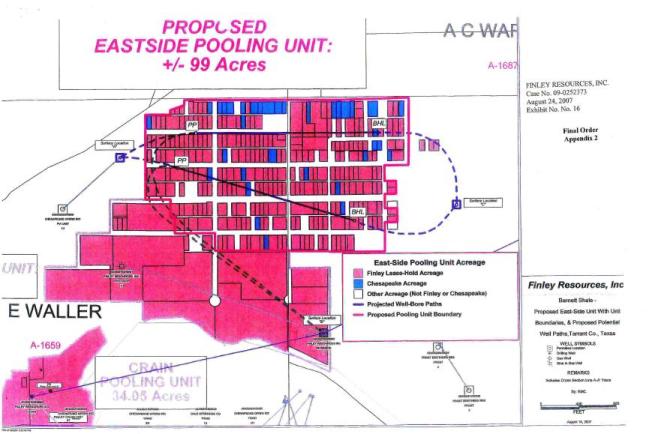On December 15, the Railroad Commission adopted new field rules for a newly designated field, the Carthage (Haynesville Shale) Field, in East Texas. It also consolidated several previously designated fields in East Texas that produce from the Haynesville and Bossier formations into this single RRC-designated field. These rules will govern the development of the Haynesville and Bossier formations in Harrison, Nacogdoches, Panola, Rusk and Shelby Counties in East Texas. These new rules are important to landowners principally because they will give operators a basis to form pooled units of up to 640 acres or more for development of the field.
A little backrgound is in order: Large portions of the land in East Texas within the Haynesville and Bossier play were previously drilled to develop the shallower Travis Peak and Cotton Valley formations. The field rules originally adopted for the Cotton Valley fields provided that only one well could be drilled for each 640 acres of land. Over time, the field rules were amended to allow operators to drill wells in the Cotton Valley with a density of as little as 40 acres per well. Operators initially formed pooled units of up to 704 acres, a size allowed by most lease standard pooling clauses. Cotton Valley wells drilled on these pooled units are still producing, thus keeping in force the leases included in the pooled units. Generally, the pooled unit designations filed by operators for the Cotton Valley wells pooled all depths under the units, including the Haynesville and Bossier formations, which lie immediately below the Cotton Valley formation. Companies now desire to develop the deeper Haynesville and Bossier formations under these Cotton Valley units.
Field rules are special rules adopted by the Railroad Commission governing the spacing of wells in a designated field. Once special field rules are adopted for a field, they govern how wells must be spaced in that field and how much acreage an operator must have to drill a well in the field. Special field rules are adopted in response to an application made by an operator of wells in the field. The operator presents evidence to hearings examiners at the RRC as to the characteristics of the formation and how much area will be drained by a well in that field, and the operator proposes rules to be adopted by the RRC. The hearing examiners review the evidence and may or may not adopt the rules requested by the applicant. The hearing examiners make a recommendation to the three RRC commissioners, and the commissioners may either adopt the recommendations of the examiners or make changes in those recommendations.
Devon Energy Production Co., LP made application to the RRC for new field rules for development of the Haynesville and Bossier formations in East Texas, and it requested that several fields previously designated by the RRC be consolidated into a single “field” for purposes of the new rules. The new rules proposed by Devon would govern wells completed in the Haynesville and Bossier formations in Harrison, Nacogdoches, Panola, Rusk and Shelby Counties. In effect, Devon proposed that the Haynesville and Bossier formations be treated as a single formation for RRC regulatory purposes. Devon identified the Haynesville-Bossier formation as the formation found at depths between 9,568 feet and 11,089 feet in the Devon-Hull Unit A Lease, Well No. 102 (API No. 42-365-36749), in Panola County. This interval is more than 1,500 feet in thickness.
Continue reading →
 Oil and Gas Lawyer Blog
Oil and Gas Lawyer Blog


